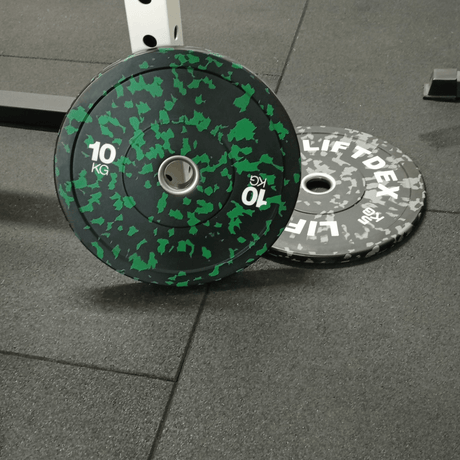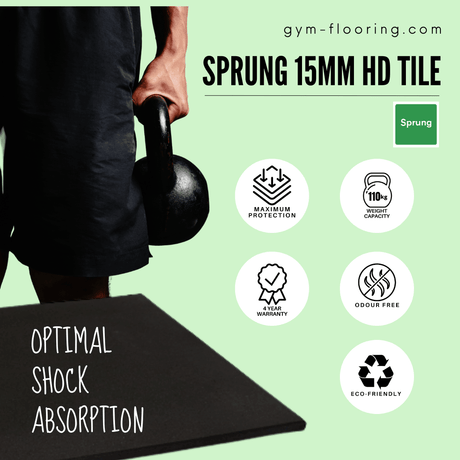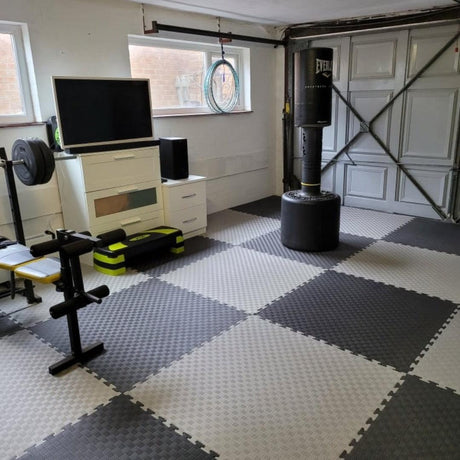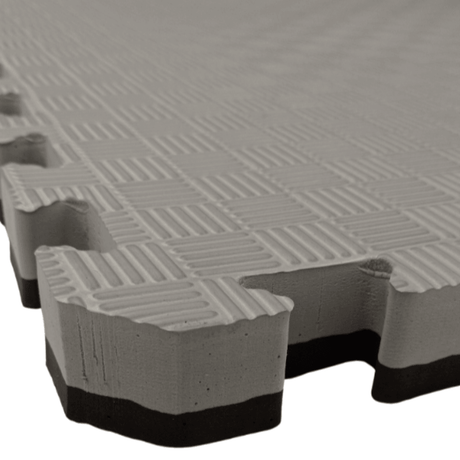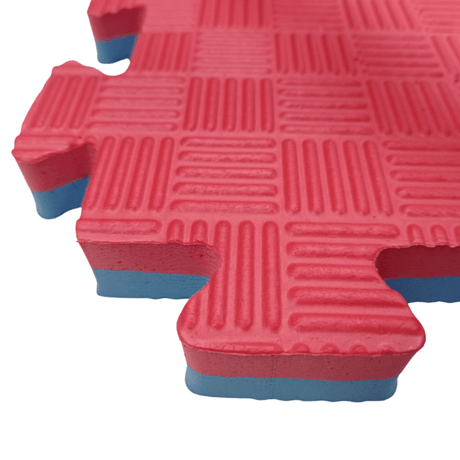How do they compare to Rubber Floor Tiles or similar floor options? Where are they best used and why should you consider them? These are just some of the questions we will address in this article in order to help you make an informed choice if you consider investing in them.
Understanding Rubber Flooring Rolls
Rubber flooring rolls are sheets of rubber flooring that can be cut to size and installed to cover all types of space. There are various types of rubber roll that come in different thicknesses, textures and colours, often for varying purposes.
Rolls of rubber differ from mats and tiles in that they are chosen to fit larger spaces and they range from 2mm thick to 12mm thick. Rubber tiles tend to come in thicker options, usually 6mm to 60mm. People tend to choose rolls of rubber over tiles for a few reasons although it partly comes down to personal taste, they may prefer the continuous look of sheet rubber rather than the seams of tiles.

Rolls are great for large and wide spaces, particularly areas with alot of equipment and machinery as the completely flat surface offers extra stability and ease of cleaning. Likewise, some may only require a lower thickness and rubber rolls have more lower thickness options available. Installation is also a factor. It may be easier to fit rubber sheeting in a particular shaped room as opposed to tiles.
Where are Rubber Flooring Rolls Used
Rubber flooring rolls are an essential part of many commercial and domestic properties used for different functions.
Gyms & Fitness Facilities
Rubber roll flooring is widely used in fitness centres and gyms because it offers high protection and shock absorption to users who are exercising as well as the equipment used. It protects users from injury while providing a non-slip surface to perform high impact workouts using weights and apparatus. The rubber also supports heavy loads in areas such as Cardio Zones with Bikes and Treadmills.

Industrial Buildings
Rolled rubber is often applied in an industrial setting where safety is paramount. This type can be textured, gridded or meshed to offer even greater traction against slips and falls. Factories and similar buildings often have forklift trucks, heavy loads and high traffic and rubber flooring has excellent anti-fatigue properties to protect workers who stand for long periods of time. Likewise rubber flooring reduces noise from loud machinery and footfall which helps to set a more comfortable environment to work in.
As rubber rolled flooring is a low maintenance floor with a natural resistance to water, spillages from chemicals and moisture will not damage the floor and it is simple to keep clean.
Children's Play Areas
Rubber flooring rolls are a popular choice for children’s play spaces for its high protection and defense against injury. Kids love to run, climb and jump and rubber is a cushioned surface which prevents accidents while being comfortable and friction-free for children to play on.

Stables & Farm Buildings
You may have noticed that many farm buildings and stables use rubber flooring to fit out their horse stalls and walkways. This is due to the simple maintenance and high comfort it provides for regular horse care. It is easy to clean, slip-resistant and cost-effective to use as opposed to other materials which require regular replacement or washing.
Domestic Utility Areas & Garages
Whether you use your Garage space for car maintenance, a workshop or home gym, rubber flooring roll works well in this setting because of its versatility. It serves as protection to your subfloor, while adding insulation and sound control when using equipment.
Main Benefits of Rubber Flooring Rolls
Durable
Rubber is a heavy duty, hard-wearing material that can last over 10+ years if well looked after.
Affordable
Installing rubber rolls is not costly. It can be fitted by yourself with minimal tools unlike other surfaces such as hardwood flooring. Without the need for labour, this brings the overall cost down.
Easy to Install
Rubber flooring rolls are extremely easy to install, especially compared to other flooring materials.
Easy to Clean and Maintain
Rubber flooring or rubber mats are easy to clean and maintain, so you can spend less time prepping your floors and more time doing the things you love. Cleaning rubber flooring requires little more than a mop or broom and a bucket of warm water.
Slip-Resistant
Slip resistance is one of a flooring material's most important characteristics. It's what makes one mat more suitable than another for high-traffic areas like hospitals and factories, where there are myriad safety concerns. In these settings, it's crucial that people don't slip and fall while they walk.
Slip resistance is how much friction your feet experience while walking on a piece of flooring, and it can be measured using the coefficient of friction (COF) value. A high COF means that the surface has a greater grip on your shoes than a low COF would, making it less likely that you will slip or trip when walking across it.
Rubber floors generally have very high COFs because they are made out of rubber granules. These granules act as tiny bumps in between each other, which gives them their non-slip properties by increasing friction between feet and flooring more than traditional materials like concrete or asphalt (which typically exhibit lower coefficients).
Eco-Friendly
Rubber flooring is a great option for reducing carbon footprint. As an eco-friendly product, rubber flooring rolls are easy to clean, maintain and recycle. Rubber floors are also very durable and will last longer than other flooring options, such as laminate or hardwood—making them a great investment.
How to Care for Your Rubber Matting
Sweep and Vacuum Regularly
To keep your rubber matting in pristine condition, it's important to sweep it regularly with either a broom or vacuum cleaner, depending on the size and surface of your matting. Not only will this help to keep your flooring dust-free and hygienic, but regular cleaning also helps extend its lifespan and ensure it continues to look new for as long as possible.
Wipe Spills Immediately
Spills happen, no matter how careful you are. But it's important to act quickly and clean up any spills on your matting as soon as possible. A damp cloth is the best tool for dealing with spills, as it will help to remove the liquid without damaging the matting itself.
Don't Use Harsh Chemicals or Cleaners
It's important to keep your matting clean and free from debris, but doing so doesn't necessarily mean using strong detergents. While these cleaners may be great at removing dirt and grime, they can also cause severe damage to the fabric of the matting.
Inspect Regularly
No matter how good the quality of your rubber mat may be, it's important to do periodic inspections to determine whether it has any signs of wear and tear. Doing so can help ensure that you don't end up replacing a mat earlier than needed, saving you both time and money in the long run.
Conclusion
Rubber flooring rolls are an affordable flooring option with unrivalled protection benefits. Not only do they provide slip resistance and durability, but they are also easy to install and maintain. Rolls work particularly well in larger areas, areas with lots of footfall and heavy loads as well as spaces that are irregularly shaped. Whether you choose rolled rubber or rubber tiles, there is no doubt that rubber will provide the safety and longevity you need.
You may also be interested in reading:
Tatami Matting: Everything you need to Know
Rubber Matting Roll: The Surprising Benefits in Everyday Use





